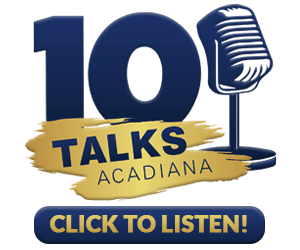Hurricane Nate made US landfall Saturday night as a Category 1 storm near the mouth of the Mississippi River in southeast Louisiana, the National Hurricane Center said in its latest advisory on the storm.
A second landfall is likely on the Mississippi coast in a few hours after the eye of the storm passes over the Chandeleur Sound.
The hurricane center said Nate has maximum sustained winds of 85 mph.
Rains had already soaked coastal Alabama, Louisiana and Mississippi much of Saturday. As the storm approached the Gulf Coast, officials in Louisiana and other states implored residents to finish their storm preparations and get inside.
New Orleans Mayor Mitch Landrieu told residents Saturday evening to wrap up what they were doing and move to a safe place.
“We’re in the fight now. The storm is on us,” Landrieu told his city of some 400,000 people — 440,000 when you count the tourists this weekend.
The mayor told them to keep an eye on the latest developments, but to remember that a Category 1 or 2 hurricane is still very powerful.
“It’s gonna to hit you hard, it’s gonna to hit you fast,” Landrieu said.
Landrieu said he visited the city’s drainage pumps facilities and was pleased with the conditions.
He was not pleased that some in the low-lying city were having hurricane parties.
“That troubles me,” he said.
Mississippi braces
Jackson County in coastal Mississippi has enacted a curfew that begins at 7 p.m. CT (8 p.m. ET), several hours before the powerful northeastern side of the core is expected.
Gov. Phil Bryant urged county residents to head north away from the Gulf but there was no mandatory evacuation.
Bryant declared a state of emergency for six counties and any others that might be affected by Nate, the state’s emergency management agency said.
In Biloxi, Mayor Andrew Gilich was especially concerned about storm surge.
“The storm surge is a big thing that really traps everyone,” he told CNN.
Gilich said he hopes Nate’s direction and predicted speed “ease the blow.”
